A Simple Plan for Urban Spaces
Movable chairs have been a hit elsewhere. Why not in Milwaukee?
Wall Street is a place, Brady Street is a place, and the Third Ward is a place. Coffee shops and sidewalk cafes are places. There’s your place or mine.
Places used to be like an old shoe before “placemaking” became one word, a new verb that attached itself to “creative.” The short version of which means “a multifaceted approach to create public spaces that promotes health, happiness, and well being.” That’s a mouthful.
Embraced by cities all over America, creative placemaking is a well-funded art movement combined with a new theory of community development that has replaced traditional means and forms by which places used to spring up in cities. The Greater Milwaukee Committee has won grants to fund creative placemaking on W. Wisconsin Ave. and is also overseeing The Artery, a community-based design project on an old railroad right-of-way in the Harambee neighborhood. The impact of these projects remains to be seen, but the more complicated such projects become, the more they may lose sight of simple ways to serve people.
The fundamentals of the creative placemaking movement are often traced back to Jane Jacobs and William Holly Whyte, the Eve and Adam of the movement. Together they upset the post-war paradigm of cities in America built to accommodate cars instead of people.
Whyte was commissioned by the New York City in 1969 to study how people used public spaces. A plodding research social scientist, he was well known for writing the bestseller The Organization Man, which chronicled the ethos of the 1950’s American corporation.
His timeless film, The Social Life of Small Urban Spaces, which can be seen here, is a remarkable study of human behavior. It led to his seminal book City: Rediscovering the Center (1988), that is just as relevant today as a quarter century ago.
After years of filming, photographing, and observing people using public spaces Whyte reported: “This might not strike you as an intellectual bombshell, but people like to sit where there are places to sit.” You get the feeling he was surprised by his findings. Really, it’s that simple?
Not quite. Whyte wasn’t talking about the public furniture bolted to the ground that you see all around Milwaukee. People feel trapped on a bench or a picnic table. “Fixed seats deny choice,” Whyte says. “The designer is saying you sit here and you sit there. This is arrogant of him. People are much better at this than designers.”
When people approach a chair in the film they “move the chair a few inches this way or that, finally ending up with the chair just about where it was in the first place,” Whyte observes. It takes a little time to make a chair our own. Fiddling with a chair, Whyte says, is “a declaration of free will.” We like to create our own social space. It civilizes a place.
And what do people do when they sit? Mostly look at other people, according to Whyte. Today we also look at other people on our phones. Either way, we like to sit. You are probably sitting in a chair right now.
Dan Biederman applied this insight to help transform Bryant Park, the once-distressed site in Midtown Manhattan (and the locale for the movie, Panic in Needle Park), into the one of the most vibrant public places in New York City. This was in the late 1980s. Biederman worked with Whyte, who convinced him to place movable chairs in the park.
More recently, former NYC transportation commissioner Janette Sadik-Khan used movable chairs in a last-minute decision to enliven a public space. Sadik-Khan recently wrote the book Streetfight: Handbook for an Urban Revolution, to describe her work under Mayor Michael Bloomberg, who added 400 miles of bike lanes and more than 60 pedestrian plazas. One pedestrian plaza she was set to open hit a snag: The tables and chairs she ordered didn’t arrive in time for the launch over Memorial Day weekend in 2009. “Someone saved the day by spotting 376 beach chairs for $10.74 apiece at a Brooklyn hardware store.” The movable chairs were a hit with people when the plaza opened.
The first objection you hear to movable chairs is they will be stolen. But the crowds they helped create probably also assured there were too many folks watching for much theft to occur. And making something thief-proof usually makes something life-proof as well. Do you want to sit in a chair that is not worth stealing? Like this uncongenial anti-reclining bench by my house in Walker’s Point that I have never seen anyone sitting in.
These inhospitable chairs are all over Milwaukee. I wonder if the real reason for not giving people a nice place to sit has something to do with class. A city was a place to get down to business. No dilly-dallying or hanging out allowed. People who mattered brought their own chair to the party, in their automobile. Post-war American cities, with their system of skywalks and parking garages, were designed to minimize contact with “street people.”
The rest of us were loitering — lingering or dawdling, passing time in a relaxed leisurely manner. Basically it’s what people do when they are not working. Like going for a walk. It’s an existential state. Loitering is being in the world without a purpose.
There are 52 references to “loitering” in Milwaukee’s ordinances, several of which are conjoined with “public urination.” People walking around were not only unsanitary, they were considered dangerous.
We took a dim view of anyone who wasn’t driving a car. The adjective “pedestrian” still means boring, tedious, and uninspired. It’s remarkable how we continue to be hostile to humans walking around despite all the recent talk about smart cities that encourage different modes of transportation. We say we want to create vibrant public spaces and still act as if there is an unsavory pedestrian element lurking about.
Plunkett Raysich Architects got the right idea when they moved some tables and chairs onto the plaza in front of their offices at 209 S. Water Street. For the cost of one public sculpture we could spread hundreds and hundreds of chairs around Milwaukee. Take the bike path for example. The two-and-a-half mile portion between the Art Museum and North Avenue is one of the busiest places in Milwaukee. Yet there is no place to sit to adjust a baby stroller, tie your shoes, or just watch the world go by.
Amid all the hubbub and theories urban planners and placemakers may sometimes forget the first principles of their craft. Whyte found it’s about treating people with respect. The first thing you do when you welcome someone into your home is offer them a chair. Why not make the same gesture at some locations in the city, and see how creative those places become?
In Public
-
The Good Mural
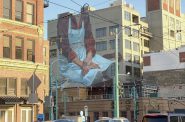 Apr 19th, 2020 by Tom Bamberger
Apr 19th, 2020 by Tom Bamberger
-
Scooters Are the Future
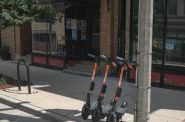 Dec 19th, 2019 by Tom Bamberger
Dec 19th, 2019 by Tom Bamberger
-
Homeless Tent City Is a Democracy
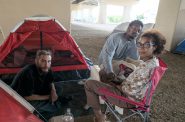 Aug 2nd, 2019 by Tom Bamberger
Aug 2nd, 2019 by Tom Bamberger


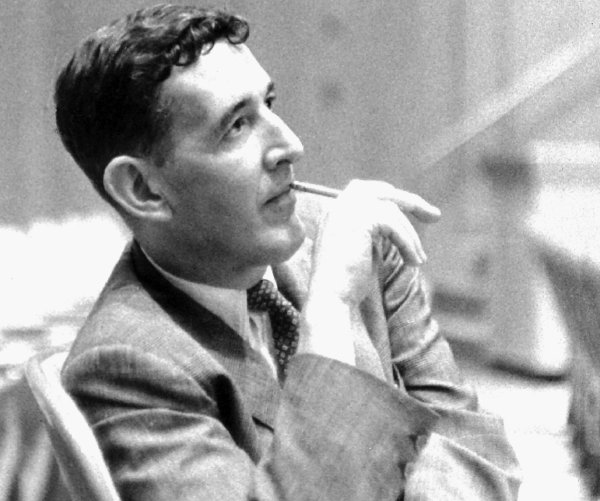
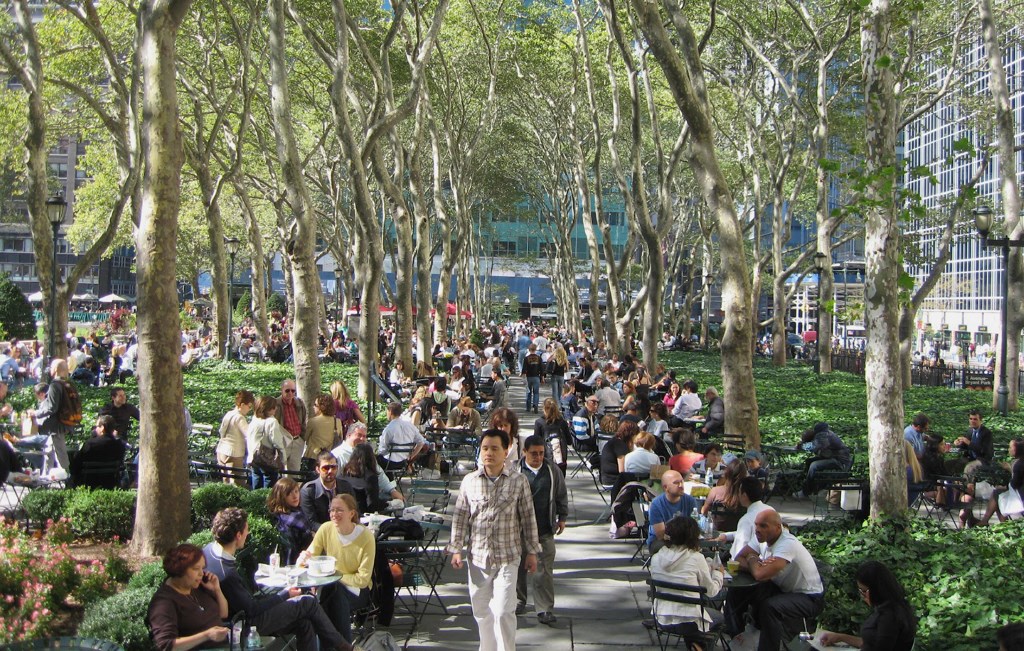


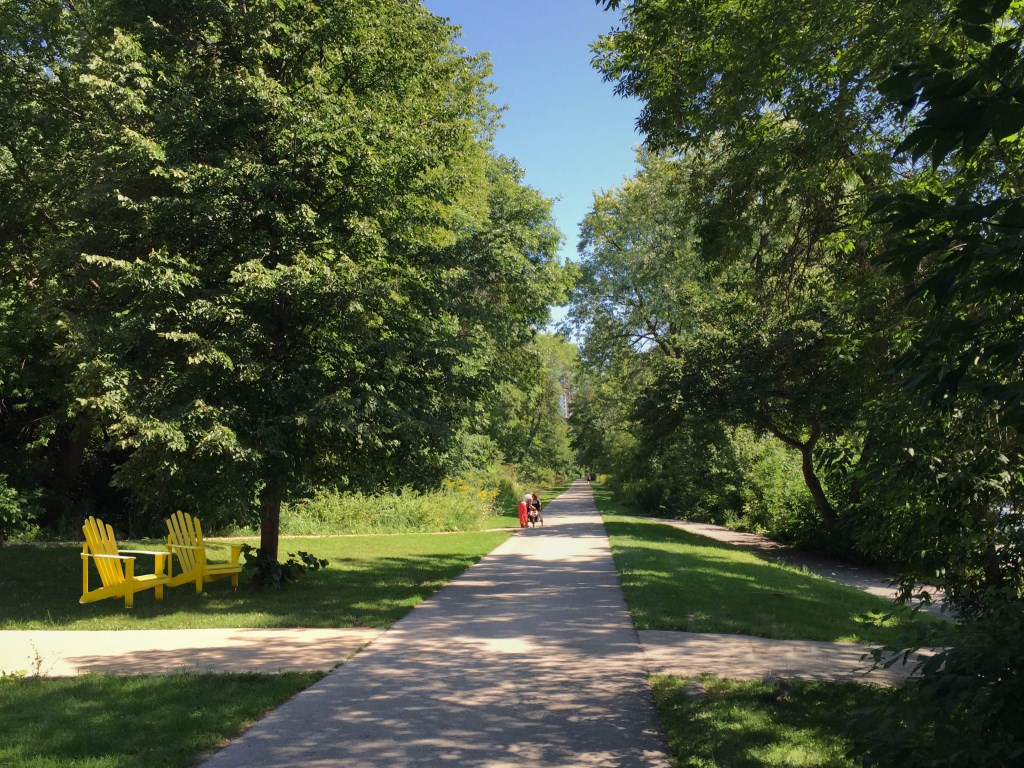
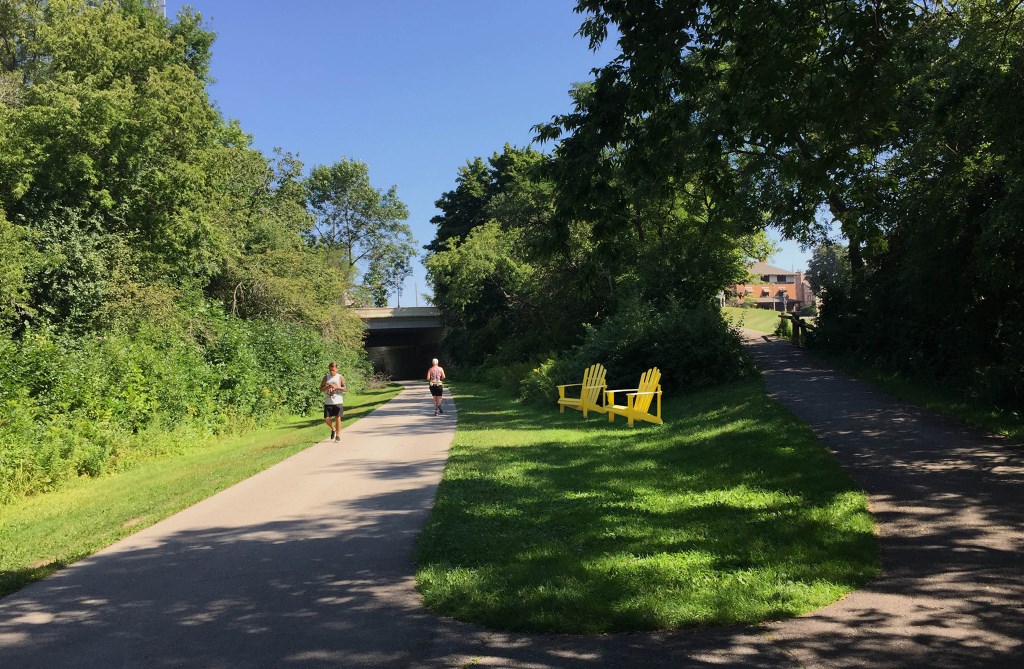
















there used to be places to rest and look at the art at MAM. one of the things I miss at the sparkling Museum of Wisconsin Art in West Bend, is a place to sit. Fortunately, there is a seating place directly in front of your video presentation Tom. Plunkett Raysich designed the 1522 On The Lake building where, until recently, I lived. I asked the board why there wasn’t a place to sit in the exterior lobby. “Oh my no,” they said(more or less), we’d have homeless people sitting in our space!.” The property also included a burbling fountain out front. One sweltering day I watched a homeless man washing his shirt in it. Later on, I saw a doggie drinking from it….
Astute observations and great research, Tom! Thanks for simplifying the issue.
Yes, most Milwaukee public spaces have little seating or it’s unwelcoming or uncomfortable. Often it’s not in shade, which many people prefer on hot days. Some parks at least bring in seasonal picnic tables but that’s where you go to eat, not to just relax. Paranoia about an “undesirable element” using seating definitely seems to contribute to making downtown less “vibrant.” Cafe patios help but you usually need to eat or drink to earn a seat. (On Brady Street there are several places you can sit along the sidewalk at tables without having to buy something.)
Even areas around the convention center have scant seating. The only chairs and tables along 4th St. are cordoned off “for convention center visitors only.” Thus, it’s not a “public” space despite being within a plaza/sidewalk expanse. There’s a back door area along Kilbourn with smokers’ caddies but not even one bench last time I walked by.
By the way, Holly Whyte co-founded the Project for Public Spaces. I think they coined the “placemaking” term decades ago–about making places where people want to be. Others added the “creative” term and seem to have made it more about art, complicating a simple concept. PPS had made comfy places in cities all over the world. They got Paris and Detroit to truck in seasonal sand and add beach chairs–and people flock to them. Sure, we have Bradford Beach, but few places downtown where people gather en masse and hang out when there’s not a special event.
What will it take for Milwaukee to pull out the welcome mat when there’s not a festival?
If there is only a little seating available, then it will be monopolized by the homeless. The solution is to provide more seating than there are homeless. If NYC, which has a huge homeless population, can solve this problem (by providing lots of seating), so can Milwaukee.
Grand Central Terminal has a wonderful food court (much higher quality food than the typical mall food court) which has public seating (no purchase required); and there is enough seating for everybody, even the homeless who might sit there for hours.
One thing NYC does is providing seating that you cannot lie on. One example is the iron bench shown on this page which includes an extra armrest in the middle which prevents somebody from lying on it.
Bravo, Tom!
Tom D……
You are right, homeless people will sit is public chairs and benches.
All the more reason to put out more chairs.
I mean, that’s the least we can do for people who do not have
a place of their own.
Yes, love this! Hopefully we can find some great green spaces for these chairs also. I am hoping we can get energy for such a green space at the 1400 block of N Milwaukee Street – a downtown Urban Food Forest??? Who’s in???
Tom D., as Tom B. noted, NYC has added lots of movable seating besides the benches. Milwaukee needs a champion or two with clout, like those mentioned in the story, to help make public spaces welcoming for “spontaneous” uses. Over time, it could totally transform Greater Downtown and beyond, and really crank up economic activity. Wherever public spaces have been made more appealing it produces great returns for all.
Bravo, Tom, for this piece, which hits an important nail right on the head. And, thanks for the commentors, who uniformly support the idea of movable chairs. People should contact their alderpersons, and their county board supervisors, as well as their school board members — each of those folks can affect how important public entities address the need for welcoming public seating in their public spaces.
I noted one direct response to my April 30 post. I stand corrected in that the new buildings on the “lake side” of Water Street are apartments not condos. I am making the case for a biophilic design component that I see lacking in our awe at the “development” of Milwaukee’s downtown. An urban forest –edible preferred- at the 1400 N. Milwaukee site has many benefits to offer.
Resources:
WICCI in 2011: one of the recommendations was forested sites on the slopes on the opposite side from water bodies – Lake Michigan! …and 1400 N Milwaukee.
http://www.wicci.wisc.edu/publications.php
https://www.tpl.org/city-parks-clean-water
and this from Urban Milwaukee:
“The new paradigm suggests that rather than a trade-off between economic growth and quality of life, an attractive environment is a crucial tool in developing the economy. With the right policies, cities like Milwaukee can attract the people who will eventually start the companies that bring job growth.”
http://urbanmilwaukee.com/2016/05/02/data-wonk-how-to-attract-jobs-to-wisconsin/?utm_source=Urban+Milwaukee&utm_campaign=35cffac9e1-RSS_EMAIL_CAMPAIGN&utm_medium=email&utm_term=0_fa7240869f-35cffac9e1-51425293